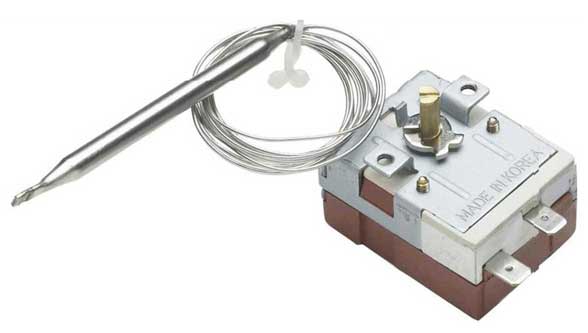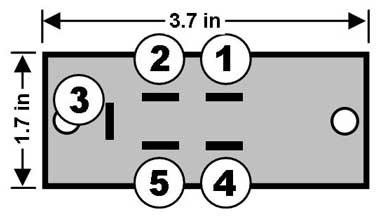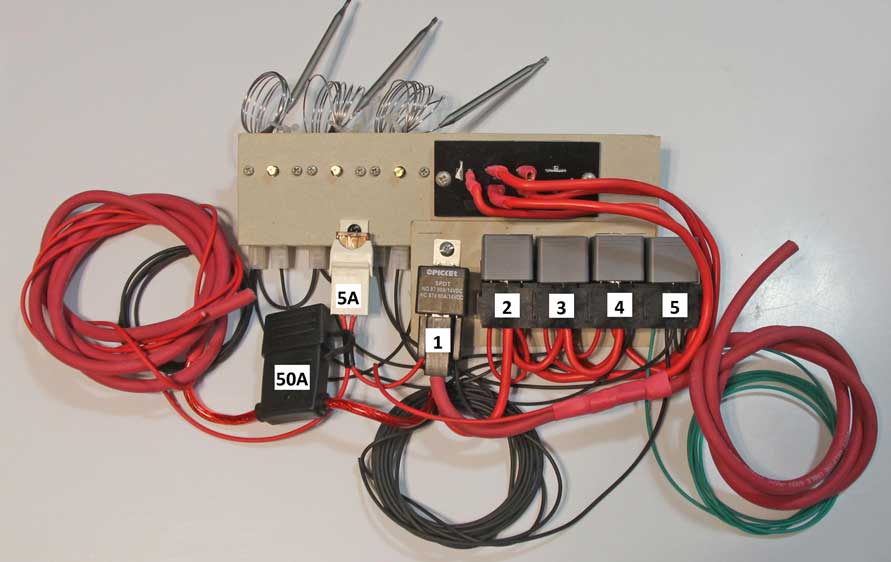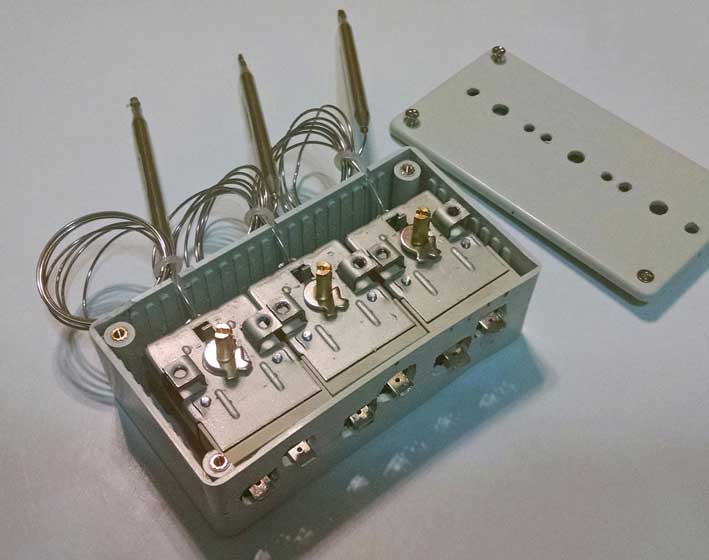dbarton
Dejected by Volvo Corp.
- Joined
- Nov 17, 2002
- Location
- Prosper, TX
I thought I would share a project I'm working on and open it to comments or speculation. This is a 4-speed fan controller for my 242t, which uses a big Lincoln Mark VIII cooling fan. The controller uses relays and other easily obtained items. I'll eventually be publishing all of the info and diagrams in my page also. I have no intention of making and selling these. It's something anyone can build themselves as long as you know what works. Nailing down what works is part of the reason for this thread.
The reason I have for doing this is pretty simple. I've been using a variety of the off-the-shelf, high-dollar variable speed fan controllers over the years and all have failed after a couple years, always at really bad times.
The Mark VIII fan is a big fan and comes with blades that are nearly 18 inches in diameter. Compare that to a 940 fan (15 inches), which cannot come close. I live in a hot climate and have a big intercooler and big aftermarket AC condenser (it's has DUAL fans). I have learned the hard way over the years that you can't have too big a fan (or too big a radiator).
Like some other fans, some Mark VIII fans are two-speed fans. Later ones are one-speed. Mine is a one-speed. Makes no difference. What I'm doing will work on any fan.
The below diagram will help some of you understand how this works. There are four relays (one for each speed), three temp sensors (for low, medium and high) and a manual override switch for full power (which is even higher speed). The Mark VIII fan on full power is really an amazing thing to see and hear. Very few cars will need that kind of air flow for normal use, but it's there if needed.
Dorman 973-018
By now some of you are wondering how the different speeds are regulated. That's done with an AC/heater fan resistor pack. The one I chose is Dorman 973-018 (shown below). Cost is under $10.00. It's a 4-speed resistor, but I am only using three of the speeds. More on that later.
4-Speed Controller Function Theory
The fan will remain off until your low temp set point is reached and the sensor activates power to the low speed relay (Relay 4). When your temperature climbs higher, the second sensor will activate the next relay (Relay 3), automatically cutting power to the lower relay. This way only one circuit will be on at a time. This action works for each relay in succession as temps rise and fan speed increases.
Why Four Speeds?
Why not? I know two speeds is definitely not enough for a Mark VIII fan. Three speeds might be ok. Four seems about right to me. The diagram here can easily be converted to a 3-speed harness by eliminating relay #4. Heck, you can even build a 5-speed harness using these components by adding just one more relay. But I just chose to do four speeds.
EDIT 09-16-2016: After creating this thread I created the following project page in my site: http://www.davebarton.com/fanharness.html
Comments or questions welcome.
Dave B.
The reason I have for doing this is pretty simple. I've been using a variety of the off-the-shelf, high-dollar variable speed fan controllers over the years and all have failed after a couple years, always at really bad times.
The Mark VIII fan is a big fan and comes with blades that are nearly 18 inches in diameter. Compare that to a 940 fan (15 inches), which cannot come close. I live in a hot climate and have a big intercooler and big aftermarket AC condenser (it's has DUAL fans). I have learned the hard way over the years that you can't have too big a fan (or too big a radiator).
Like some other fans, some Mark VIII fans are two-speed fans. Later ones are one-speed. Mine is a one-speed. Makes no difference. What I'm doing will work on any fan.
The below diagram will help some of you understand how this works. There are four relays (one for each speed), three temp sensors (for low, medium and high) and a manual override switch for full power (which is even higher speed). The Mark VIII fan on full power is really an amazing thing to see and hear. Very few cars will need that kind of air flow for normal use, but it's there if needed.
Dorman 973-018
By now some of you are wondering how the different speeds are regulated. That's done with an AC/heater fan resistor pack. The one I chose is Dorman 973-018 (shown below). Cost is under $10.00. It's a 4-speed resistor, but I am only using three of the speeds. More on that later.
4-Speed Controller Function Theory
The fan will remain off until your low temp set point is reached and the sensor activates power to the low speed relay (Relay 4). When your temperature climbs higher, the second sensor will activate the next relay (Relay 3), automatically cutting power to the lower relay. This way only one circuit will be on at a time. This action works for each relay in succession as temps rise and fan speed increases.
Why Four Speeds?
Why not? I know two speeds is definitely not enough for a Mark VIII fan. Three speeds might be ok. Four seems about right to me. The diagram here can easily be converted to a 3-speed harness by eliminating relay #4. Heck, you can even build a 5-speed harness using these components by adding just one more relay. But I just chose to do four speeds.
EDIT 09-16-2016: After creating this thread I created the following project page in my site: http://www.davebarton.com/fanharness.html
Comments or questions welcome.
Dave B.
Attachments
Last edited:







 . I don't have the Low speed (26%) hooked up, so all others are shown. My amp meter also shows watts if anyone finds it useful.
. I don't have the Low speed (26%) hooked up, so all others are shown. My amp meter also shows watts if anyone finds it useful.